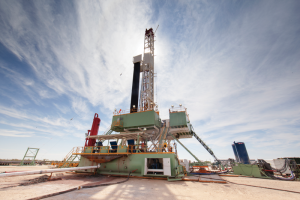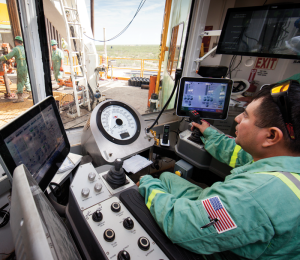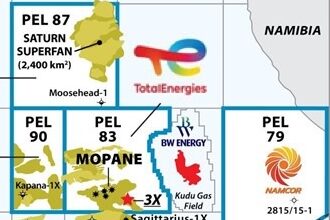In industrialized drilling process, every element is up for optimization
Efficiency opportunities abound in pad design, data management, integration of directional drilling into rig operations
By Joanne Liou, Associate Editor
 Kevin Neveu is President & CEO of Precision Drilling. He also serves on the IADC Executive Committee.
Kevin Neveu is President & CEO of Precision Drilling. He also serves on the IADC Executive Committee.
How is the industry stepping up to cope with the uncertainty of commodity prices while ensuring the most efficient operations?
The industry’s transition to economically develop significant production from tight sand and shale-type resources is directly a result of improved drilling and completion performance through both process improvements and drilling and completion technology improvements. These improvements have significantly lowered drilling and completion costs and improved investment returns our customers achieve, which thereby mitigates to some degree the commodity price risk.
Drilling technology and process improvements come from a combination of implementing drilling system controls technology, downhole tool and fluids technology, substantially improved rig mobility, wellbore construction process management and crew training. The combination of these factors has led to a well construction process that is largely industrialized, whereby each element of the process can be optimized and then consistently repeated.
Is the optimization process more about the mobilization process and the people, or is it more about the kind of rig you have?
Every element of the drilling process is under scrutiny for optimization. Some of the lower hanging fruit available is rig mobility. Moving a rig from location to location quickly or in pad drilling applications utilizing walking or skidding systems significantly improves the time a rig spends drilling a well, minimizing the nonproductive moving times. Digital electrical drilling control systems, often described as AC-drive systems, can improve the drill pipe control functions, such as torque position, weight on bit and mud flows and pressures to optimize and accurately control the drilling rate of penetration.
Downhole tool string technology and design can be used to optimize the drill bit control, positioning and rate of penetration. Digital software and drilling tools can be used to eliminate or mitigate drill string vibration, sticking and improve wellbore consistency. When all of these elements are considered as part of the optimization effort, the well construction process is industrialized; further gains tend to be incremental.

Where do you think operators will turn to for cost reduction?
We’re not finished optimizing the process, though the efficiency gains have already been remarkable. In the Eagle Ford, for example, we’re drilling wells in the range of 14 to 18 days depending on the complexity. In the early days of the play, it took 40 to 60 days. I believe there are still opportunities for optimization around pad design and the number of wells per pad, and potentially on the completion side. I also believe that further efficiency gains can be achieved by combining some of the currently separate processes, such as rig operations and directional drilling.
What does the move toward industrialization mean as we enter this current slowdown?
As commodity prices remain depressed, likely the majority of drilling activity in North America will be development drilling, where industrialization is well under way. Efficiency, repeatability and cost reduction remain paramount, and for Precision, we will continue to focus on maximizing efficiency for the customer to help them generate good returns on their projects, even in a softer commodity price environment.
In July 2014, Precision entered an alliance with Schlumberger to increase industrialization of unconventional drilling in North America. How would you describe the industrialization and synergy between the two companies?
Precision’s alliance with Schlumberger is an expansion of our entry into the provision of directional drilling services in 2011. Our view is to consolidate the directional drilling process and downhole equipment with our drilling rig and services. We believe we can improve the efficiency, reduce the total manpower required, reduce the failure rate and reduce the costs while improving overall well efficiency for our customers. The alliance combines Precision rigs with Schlumberger’s full range of advanced downhole tool technologies, engineering support and crew training services.
Schlumberger trains our people and provides well engineering and remote service. In return, Schlumberger receives access to more than 200 Precision rigs across North America performing horizontal drilling operations. Our customers benefit from a lower total cost, fewer people on location, and a rig and downhole tool set that are designed to work together.
What results have you seen so far?
In Q3 2014, we reported 1,800 integrated operating days – a Precision drilling rig combined with Precision directional services – which is three times the amount we completed during all of 2013. There’s still a long ways to go, but as of October 2014, with the Schlumberger alliance, we had already completed 27 wells in seven basins across North America. In a recent side-by-side field comparison test, a Precision-Schlumberger rig out-drilled a comparable Precision rig with a third-party directional service provider, as well as the pacesetter well. As a result, we have seen this customer fully adopt our alliance services. We’re proving that when the rig and the downhole directional kit are consolidated and supported by Precision, a better economic outcome is delivered.

What are the challenges with this approach to industrialization?
The North American drilling industry has evolved to where a typical well construction project utilizes a highly fractured group of service providers. In some cases, as many as 40 or more different service providers may at some point be involved in a single well construction project, and the industry considers this the norm. Challenging this business model by combining some service provision, no matter how logical or industrially sound, needs to overcome decades of commercial inertia. This transition, like most technology transitions in oil and gas drilling, is inevitable but occurs slowly until we have repeatedly proven the value. The performance gains we are demonstrating in the field with our integrated directional drilling offering are generating momentum for our services.
Do you see opportunities for this approach to be applied elsewhere?
In Canada, the potential for LNG will only be realized with industrialized-style pad drilling; otherwise the production costs are too expensive. We’re confident our integrated model will provide economic benefit for potential Canadian LNG projects.
Outside North America, shale resources could potentially be developed with industrialized-style drilling, whether in Argentina, Europe or Saudi Arabia. Tight, consolidated, low-permeability rock is not limited to North America, though North American development benefitted from having substantial infrastructure already in place. Ultimately, as we move from big reservoirs to smaller and smaller reservoirs, resource plays will continue to become more important.
One topic that is being discussed more and more in the industry is data. What role does data management play in industrialization?
Data management is essential in optimizing any process. Precision’s ability to capture and analyze vast amounts of drilling data with operations in virtually every unconventional basin in North America is one of the key elements of our optimization process. We believe that we can apply these learnings to improve efficiency across our fleet and monitor those rig performance improvements simultaneously. Our customers count on consistent predictable operation by Precision in every region supported by our ability to manage and oversee our operations on a real-time basis.
Precision Drilling’s Target Zero program reinforces and improves policies and practices to help meet the goal of zero injuries. Do you believe incident-free operations are possible?
We’ve been running Target Zero since 2000 and have demonstrated consistently meaningful safety improvements yearly because of our program. Based on the high percentage of Precision’s rigs that operate recordable-free from year to year, I know achieving Target Zero is possible. Our people are proving it every day.
We also have a corporate safety council, which includes senior and junior leaders from the company and members of our board. The council monitors our safety activities companywide. We are able to identify best practices and learnings and get the knowledge to the field quickly, thoroughly and consistently. Precision continues to transition from critical and exception-based management to managing every aspect of the drilling operation.
Is it beneficial to have a procedure for every aspect of drilling?
Implemented properly through an effective quality management system, defined processes will optimize the drilling process. We desire an efficient, consistent and predictable risk management operating environment. Our procedures are integrated to mitigate the risks of human error, risk-taking or short-cut exercises.




